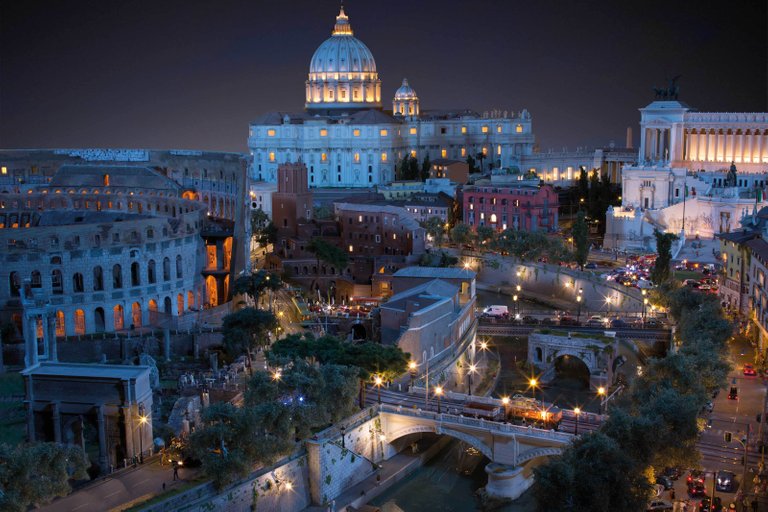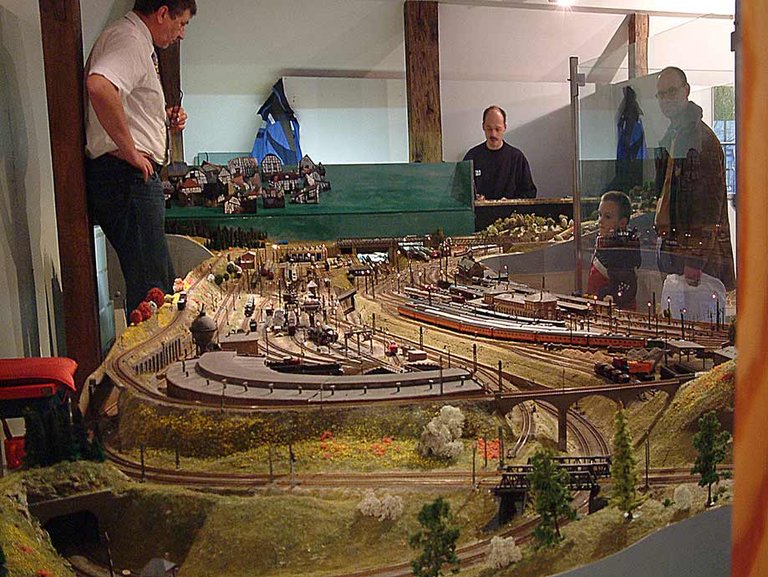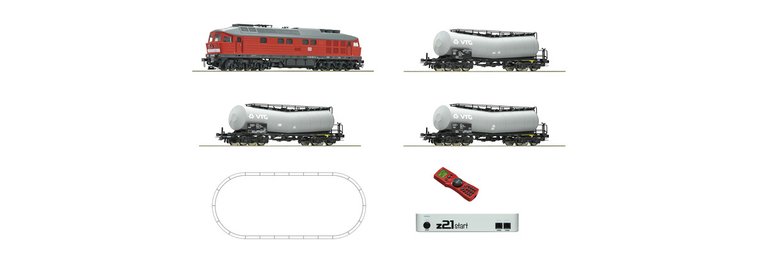How to start your own model railway (part 1 of 2)
I am posting my modeling progression for some time now and things that I often hear (on Steemit as well as on other platforms and in real life) are something like "I could never do that", "I don't have room / money / time for that" and similar.
Let me show you how everyone can do that

Miniaturwunderland, Hamburg, Germany

This is going to be a guide in two parts.
Some UnpleasingFacts
Since I don't want to tell you fairy tales there are some things to consider and can't be whitewashed. But don't worry. It's not that bad:
- You won't be a master from day one
- You need to invest time
- You need to practice
That's it. Sounds fair, doesn't it?
I already hear you say "But hey, all those things are so expensive"
Yes, and no. If you want to start with a huge layout with 200 meters rail track, then yes, this is not going to be cheap. But I don't advise to start like that ;)

Choosing The Gauge
First things first. The gauge (or scale) selection is probably the most important first step. There are more different gauges than you may expect. The smallest (z-gauge) is starting at 1:220 ending at 1:22,5 (gauge II) which is designed for your garden outside.
The most common gauge is H0 (H zero) with 1:87 providing the largest selection of purchasable models of any kind. (Trains, cars, buildings, trees, people and so on)
Every scale has it's pros and cons. The smaller it gets the less space you need (obviously) but the less fail-safe and fragile things get.

Example Layout in N-Gauge (1:160)
My personal preference is H0 (1:87) since it is the most common one, is large enough to have a descent amount of detail, not that fragile and not too big.
If you need to safe space I reccomend N-gauge (1:160). Almost half the size of H0 but not too small. Yet enough products on the market.

Getting Started
So you have selected a scale and want to start? Great!
Most manufacturers provide starting kits at very low cost. To get you addicted, so to say. Whitch is absolutely ok!
Those sets usually contain a simple loop, a train with some wagons and all necessities to get started (e.g. power supply).
One of the big brands (at least in Europe) is Roco, providing a big selection of those starter kits:

51288 - Digital z21®start Set from Roco
If you're easy to satisfy, then that's it. You're good to go. Good luck and have fun. ... but let's be honest, that will get boring quite soon, right?!
So what else is there to say?

Chosing the era
by default we are differentiating between six eras representing a specific time frame:
- Era I 1835 - 1925
- Era II 1925 - 1945
- Era III 1945 - 1970
- Era IV 1970 - 1990
- Era V 1990 - 2006
- Era VI 2006 - present
It's up to you what time you want to represent. I personally like era III the most since it includes old steam engines as well as diesel engines.
If you want to cruise around with your ICE and build sky scrapers you may choose otherwise :)

H0 gauge - Era III
Things so consider: Trains from era I and II are harder to get but may provide a more interesting scene than modern (present) layouts. On the other hand, using a more present time frame may be easier to build since you literaly can go outside and check it out how it looks like in reality.

Chosing the complexity
Last but not least lets talk about the complexity.
What does that mean?
As shown above, it can be as easy a buying a starter kit or as complex as a multi million € project like the one in Hamburg.
Things to consider:
- Do you want to have a simple track with some trains cruising around or do you want to build a city / some nature around it?
- How realistic do you want it to have? Stick to one era or pick all the trains you like, regardless of their time beeing used?
- Do you want to have it fully automated or control it by yourself?

A simple pre-modeled layout from Noch. N-scale 125 x 60 cm
That's all for the first part. I hope you've now some insight on what to consider first and what are even the possibilities.
Allthough we only have scratched the surface.
In the next part we will take a look on how to actually build simple stuff if you want more than some rail tracks on your carpet.
As always, if you have any questions do not hesitate to ask in the comments below.
Hi wirago,
Visit curiesteem.com or join the Curie Discord community to learn more.
This post is fantastic. All descriptions, technical aspects, questions and suggestions are magnificent. One question: can a model railway be done imagining futuristic trains?
A cordial greeting @wirago
That would be tricky. There are no futuristic models to purchase, but you could modify modern high speed trains. There are also no mono rail solutions. Hm... Maybe there is a market gap that needs to be filled ;)
Thank you!.
hi dear @wirago, this is an amazing post !! do you really know many things, how long have you been doing it? I had an ex-father-in-law who loved model trains and spent hours building and also spent his time in real stations !! congratulations on your work and on your curie vote
Well, I started building models when I was a kid. Built those plastic model airplanes. Coloring was horrible and there was glue everywhere :D
Later I switched to the tabletop game Warhammer Fantasy and became better over time. Today, aged 34 I got to a descent work quality I think. Not perfect, but ok I hope :)
Posted using Partiko Android